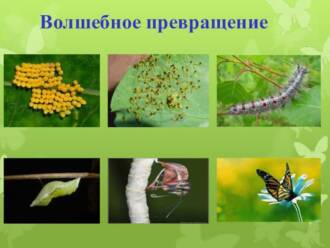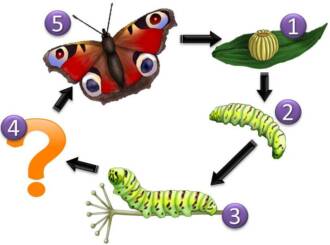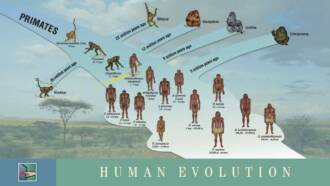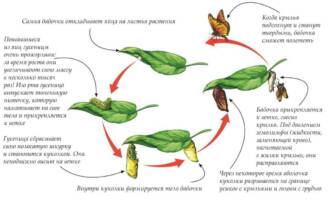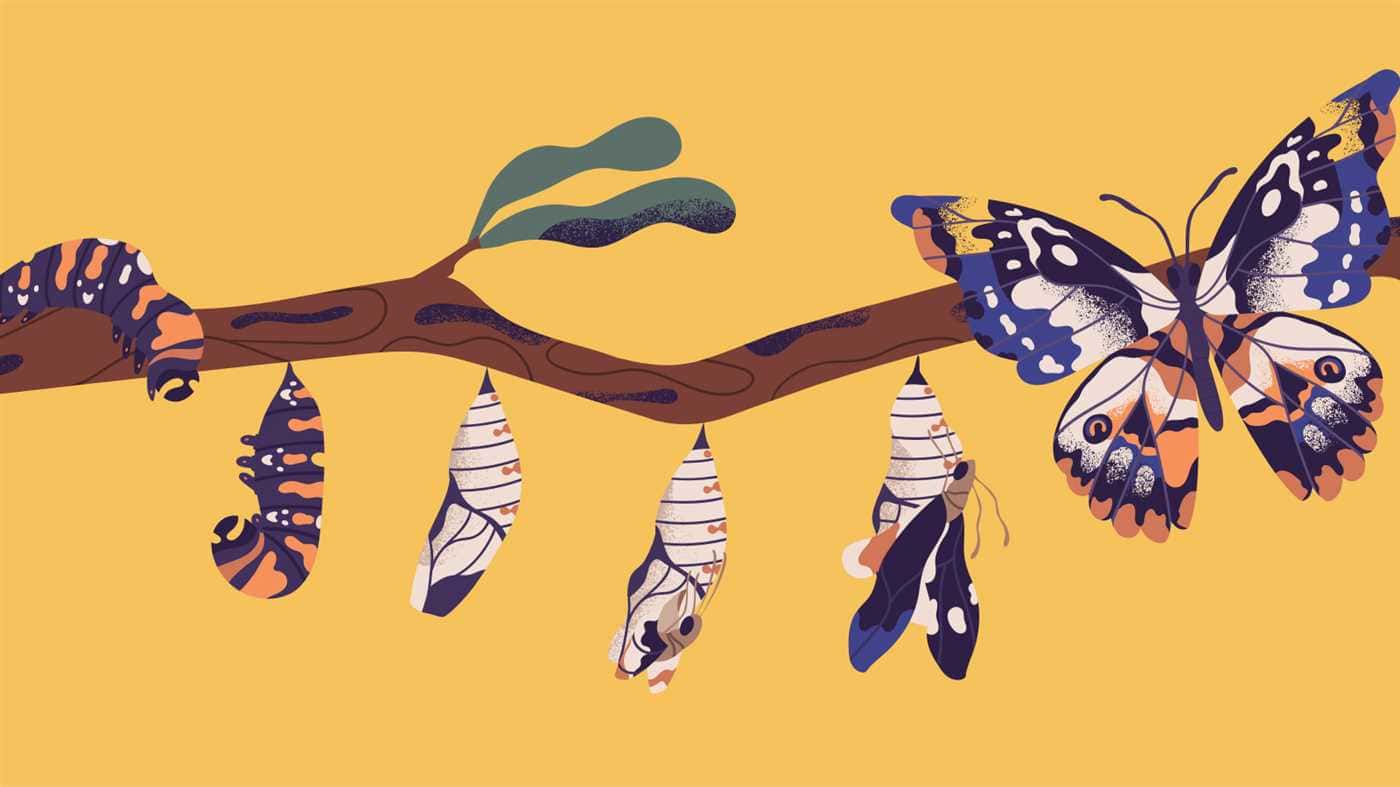
Butterflies are some of nature's most amazing creatures. Their colorful wings and graceful movements attract attention and delight people of all ages. However, to achieve this beauty, butterflies undergo an amazing process of metamorphosis.
Metamorphosis is the process of changing the shape and structure of an organism from one state to another. For butterflies, this process begins with an egg, from which a hungry caterpillar emerges. The caterpillar feeds on leaves and gradually grows until it reaches a certain size.
After this, the caterpillar turns into a chrysalis. Inside the chrysalis, incredible changes occur - the caterpillar's body decomposes and new organs and tissues of the future butterfly are formed in its place. This process can take from several days to several months, depending on the type of butterfly.
And finally, the chrysalis splits and a tender butterfly flies out of it. At first, her wings are soft and fold along her body, but soon they spread out and become colorful. Now the butterfly is ready to fly and the beauty it will bring to nature.
Butterfly metamorphosis: from an egg to a beautiful insect
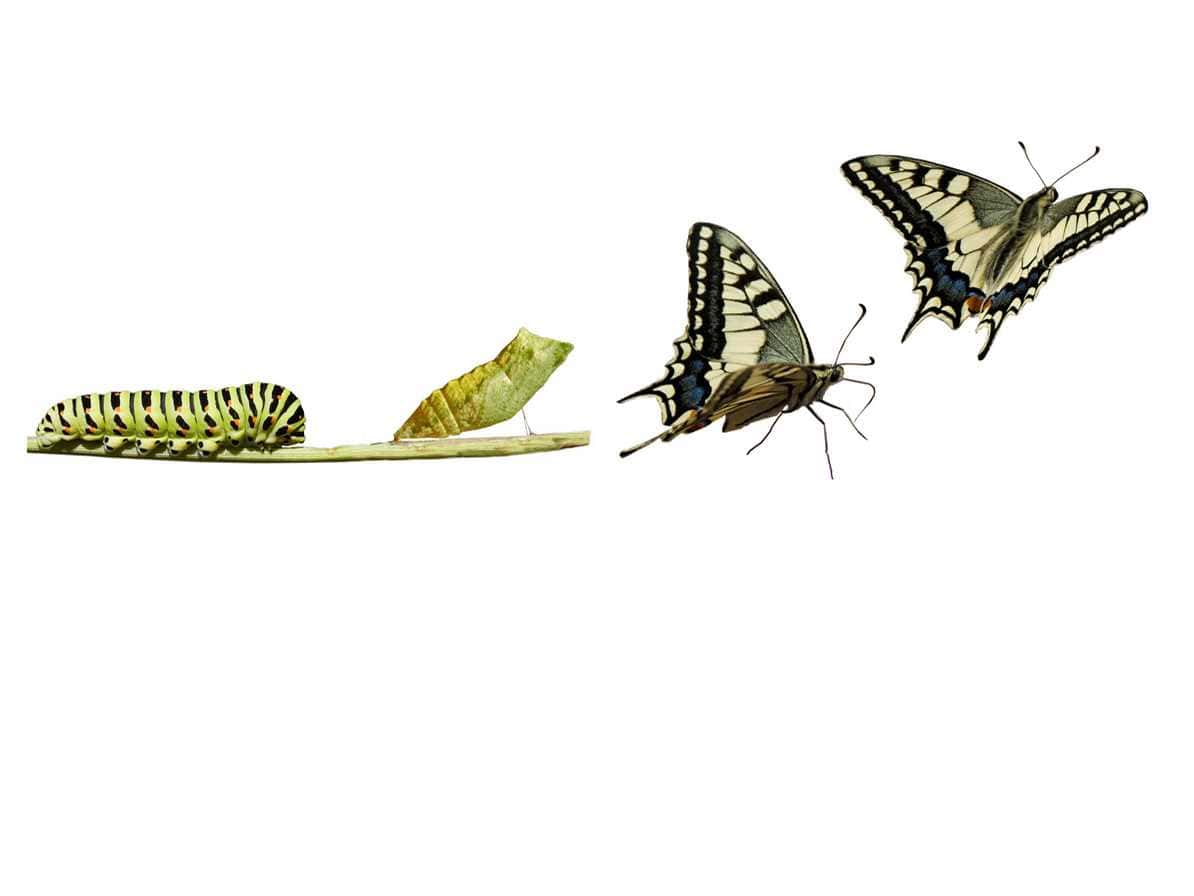
Butterfly metamorphosis is an amazing process of development from an egg to an adult insect. It consists of several stages, each of which is an important stage in the life cycle of a butterfly.
Egg
At the beginning of its journey, the butterfly exists in the form of a small egg. Butterfly eggs come in many shapes and colors, depending on the species. They are usually deposited on plants that will serve as food for hungry caterpillars.
Caterpillar
A caterpillar hatches from an egg - the first active stage of metamorphosis. The caterpillar begins to feed actively, eating leaves and other parts of plants. It grows and changes, passing through several larvae. The caterpillar is the most vulnerable stage of the butterfly's life cycle, it is endangered by predators and parasites.
chrysalis
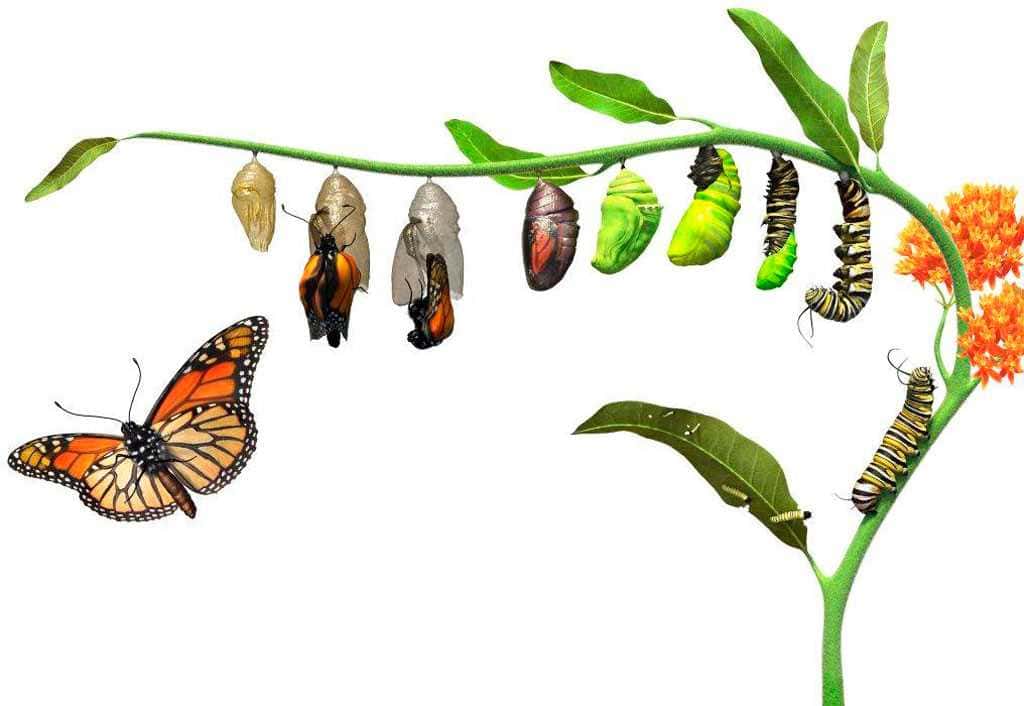
After the last larva, the caterpillar turns into a chrysalis. The pupa is a motionless stage of metamorphosis during which internal changes occur. Outwardly, the pupa may look like an insect hidden in a tire. Inside the pupa, the tissues of the caterpillar are transformed into delicate butterfly wings.
Butterfly

Finally, an adult butterfly emerges from the pupa. She unfolds her wings and emerges from her hiding place. In the beginning, butterfly wings are soft and fold, but they soon dry out and become strong. The butterfly is ready to fly and to search for food to survive and reproduce.
Thus, the metamorphosis of butterflies is an amazing process of transformation from an egg to a beautiful insect. Each stage of this process has its own importance and is accompanied by unique changes that allow butterflies to survive and reproduce in a variety of conditions.
Birth of Life: From Egg to Hungry Caterpillar
The life of butterflies begins with an egg, a small but important link in their development cycle. Butterfly eggs come in different sizes, shapes, and colors. Each egg contains everything it needs to become a future caterpillar.
When the egg develops, a caterpillar hatches from it. The caterpillar is the first stage of the butterfly's development. It looks like a small worm and has a strong appetite. Caterpillars feed on vegetation and grow actively to gain enough nutrients for their future transformation.
Caterpillars can have different colors and patterns that help them camouflage themselves against the background of plants and protect themselves from predators. They may also have hairs or spines for protection.
During their growth, the caterpillars go through several molts when their skin becomes tight and they have to shed it. After each molt, the caterpillar gets bigger and bigger.
Caterpillars remain in this state for some time until they have gained enough nutrients and reached the right size for their next stage of development – becoming a chrysalis. The chrysalis is a resting stage where the caterpillar forms its protective shell and turns into an entirely new creature – a butterfly.
Thus, the birth of butterfly life is an amazing process that includes several stages of development, from egg to hungry caterpillar. Each stage has its own purpose and function in the life cycle of butterflies.
Little caterpillar: growth and food search
The caterpillar is the first stage of the butterfly's life cycle. It begins its existence as a small egg, from which a hungry and active larva hatches. The caterpillar differs from the butterfly in its appearance and way of life.
The main task of the caterpillar is to grow and gain weight. She is constantly looking for food to meet her nutritional needs. The caterpillar has powerful jaws that help it tear and eat plant food. It can feed on leaves, stems, flowers and other parts of plants.
The caterpillar actively moves through the plants using its body and small legs. It can assume various positions to reach food, such as rearing up on its hind legs or stretching out the front of its body. The caterpillar may also use its legs to defend itself against predators by pretending to be dead or falling off a branch.
In the process of searching for food, the caterpillar can leave behind traces in the form of excrement deposited on leaves or branches. This helps it not only determine its path, but also alert other caterpillars to the presence of food in the area.
Caterpillar growth is very fast. She constantly grows and sheds to renew her skin, which becomes tight after each new growth stage. The caterpillar may shed several times before reaching its final size before becoming a chrysalis.
Fascinating transformation: from caterpillar to chrysalis
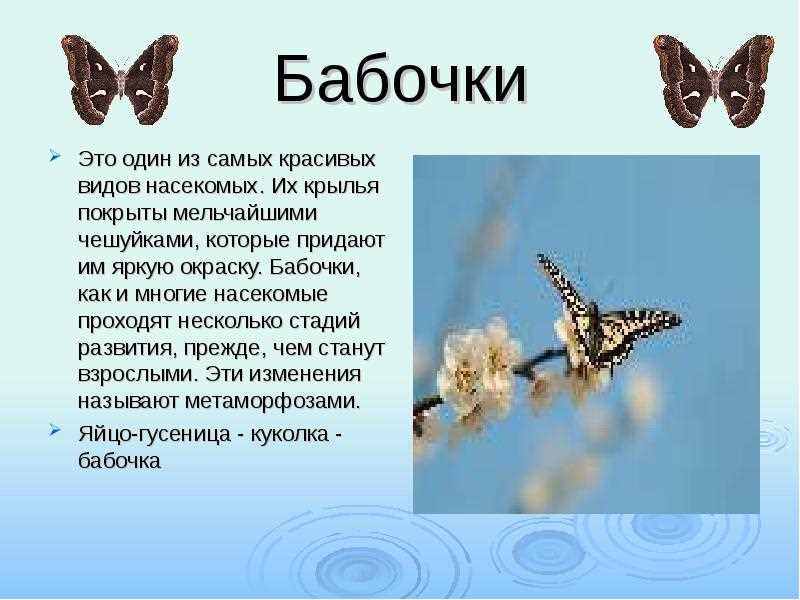
The process of turning a caterpillar into a chrysalis is one of the most amazing natural phenomena. The caterpillar is the first stage of a butterfly's life and goes through an incredible transformation to become a beautiful insect.
At the beginning of its journey, the caterpillar actively feeds and grows in order to gain sufficient mass for further development. She constantly eats the leaves of plants until she reaches the desired size. After that, the caterpillar begins to prepare for the transformation.
It is fixed on a branch or leaf, attached by special threads that it secretes from its body. Then the caterpillar forms a kind of protective cocoon, or chrysalis, in which the transformation itself takes place.
Amazing changes take place inside the chrysalis: the caterpillar turns into a butterfly. Her body decomposes into cells, and then each cell is rebuilt to create a new shape - the shape of a butterfly. This process takes some time and eventually the chrysalis splits and a new butterfly emerges.
The transformation of a caterpillar into a chrysalis and further into a butterfly is an amazing phenomenon that demonstrates to us that nature is capable of incredible transformations. It reminds us that there is always room for transformation and growth in life. Like the caterpillar, we can change and transform to become the best version of ourselves.
Inside the cocoon: the secrets of transformation
The process of transformation of a butterfly inside a cocoon is a real mystery of nature. Starting from the moment when the butterfly closes itself in its cocoon, amazing transformations take place that completely change its appearance and structure.
One of the main mysteries of transformation is the process of splitting cells inside the cocoon. The butterfly begins to transform from caterpillar to chrysalis, at which point its body undergoes profound changes. The cells of her body begin to divide and rebuild, forming new organs and structures.
In addition, inside the cocoon, the process of transformation of parts of the caterpillar into elements of the future butterfly also occurs. For example, the jaws of the caterpillar turn into a tender mouth of a butterfly, and the legs - into beautiful and graceful paws. These changes occur at the cellular level and require complex coordination of genetic processes.
Inside the cocoon, the formation of butterfly wings also occurs. In fact, the wings of a butterfly are already inside the cocoon at the caterpillar stage, but they are in the form of primitive plates. In the process of transformation, these plates unfold and spread, giving the wings of the future butterfly their usual shape and beauty.
Thus, the process of turning a butterfly inside a cocoon is a real miracle of nature. Within a few weeks, the caterpillar undergoes amazing changes that turn it into a colorful and graceful butterfly. These mysteries of transformation are still not fully revealed, and researchers continue to study this amazing process.
The Miracle of Transformation: From Chrysalis to Butterfly
Nature is full of amazing phenomena, one of which is the metamorphosis of butterflies. This process begins with an egg that hatches into a hungry and active caterpillar.
The caterpillar immediately begins to feed in order to gain strength for the subsequent stages of its development. It actively eats leaves and young shoots of plants until it reaches its maximum size.
When the caterpillar is full, it begins to look for a suitable place for transformation. She weaves a silk cocoon or burrows into the ground to turn into a chrysalis.
Amazing changes occur inside the pupa. Outwardly it appears to be resting and motionless, but inside complex transformation processes are taking place. The pupa turns into an imago – an adult butterfly.
Finally, after a few weeks, the butterfly is ready to fly out of its cocoon or out of the ground. She spreads her wings and begins to explore the world around her. The butterfly's beautiful wings are covered in colorful patterns that help it attract mates and deter predators.
The miracle of transformation from chrysalis to butterfly is one of the most amazing and delightful processes in nature. It reminds us of the endless cycle of life and that every creature has its own unique purpose and beauty.
New world: the moment of departure from the cocoon

The moment of departure from the cocoon is one of the most exciting moments in the life of a butterfly. After spending long weeks in a cocoon, she is ready to spread her wings and face the new world.
At this moment, the butterfly feels a mixture of feelings - she experiences joy and excitement, mixed with some anxiety. She knows her life will never be the same and she is up for the challenge.
When flying out of the cocoon, the butterfly must be very careful and accurate. She should gently spread her wings and make sure they are fully unfolded. This is very important because the wings are what makes the butterfly so beautiful and unique.
When the butterfly is finally ready, it makes its first flight. This moment when she leaves her cocoon and meets the world is a real feat. She feels free and light and she is ready to explore new places and meet new friends.
Wings of beautiful shades: the creation of beauty
The evolution of colors
Butterfly wings are a true work of art created by nature. They amaze with their unique beauty and variety of color shades. But how do these beautiful wings get their bright and rich colors?
The process of formation of color shades on the wings of butterflies is associated with a special type of cells called wing-colored scales. These scales contain pigments that are responsible for the color of the wings. The color of the wings is determined by the type of pigment and its concentration in the wing-colored scales. Through this mechanism, butterflies can create a wide range of hues, including bright and saturated colors.
The role of genetics
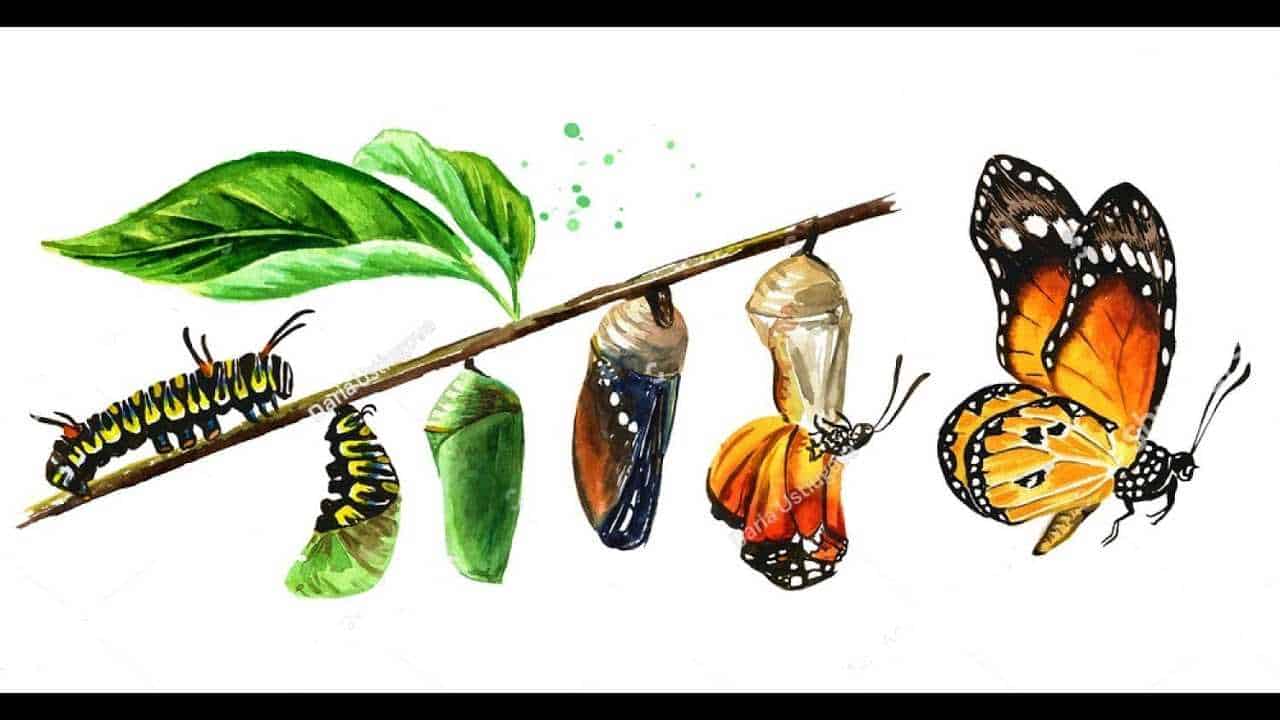
However, the color of butterfly wings also depends on their genetic information. Genes determine not only the presence of pigment, but also its appearance. For example, some genes may code for blue or yellow pigments, while other genes may code for red or green pigments. The combination of different genes and their interaction determine the final wing color of each butterfly.
It is interesting to note that the genes responsible for the color of the wings can vary in different butterfly populations. This may explain differences in color shades between different species and even within the same butterfly species.
Butterfly in nature: role and meaning
Butterflies are one of the most beautiful and amazing creatures in nature. They play an important role in the ecosystem, performing many functions.
First of all, butterflies are pollinators of plants. When they collect nectar from flowers, they carry pollen from one flower to another on their legs and proboscis. Thus, they help plants reproduce and maintain species.
Butterflies also serve as food for many other living things. Birds, lizards, frogs and even some mammals feed on butterflies and their larvae. Thus, butterflies enter the food chain and play an important role in maintaining biodiversity.
However, butterflies also have their enemies. Some insects, spiders and birds prey on butterflies to eat them. To survive, butterflies have developed various defense mechanisms. Some species of butterflies have bright colors and wings to scare off predators, while others have special hairs or a disgusting smell.
In general, butterflies are an important component of nature. They not only delight us with their beauty, but also perform important functions in the ecosystem. Without butterflies, many plants would not be able to reproduce and many animals would not be able to get food. Therefore, they deserve our attention and protection.
The journey of life: from a butterfly to a new generation
Butterfly development

The life cycle of a butterfly begins with an egg that it lays on a plant. A hungry caterpillar emerges from the egg, which actively feeds in order to gain strength for further development. The caterpillar goes through several molts, gradually increasing its size.
After the last molt, the caterpillar turns into a chrysalis, in which amazing transformations take place. Metamorphosis occurs inside the pupa: the caterpillar body decomposes and a new, winged butterfly body is formed. This process takes several weeks, during which the butterfly is completely transformed.
First flight
When the metamorphosis is completed, the butterfly emerges from the chrysalis as an adult and ready for its first flight. Her wings spread and dry out, giving them strength and ability to fly. The butterfly begins to look for food and a partner for reproduction.
When a butterfly finds a suitable place to lay its eggs, it continues the cycle of life, leaving offspring. The eggs turn back into hungry caterpillars and the cycle begins anew.
The importance of butterflies to the ecosystem

Butterflies play an important role in the ecosystem. They are pollinators of plants, transferring pollen from one flower to another and facilitating their reproduction. Butterflies also serve as a food source for many animals, including birds and frogs.
The journey of a butterfly's life is an amazing process of transformation that reminds us of the beauty and wonder of nature. It also reminds us of the importance of respecting the environment and preserving the diversity of living beings on our planet.



